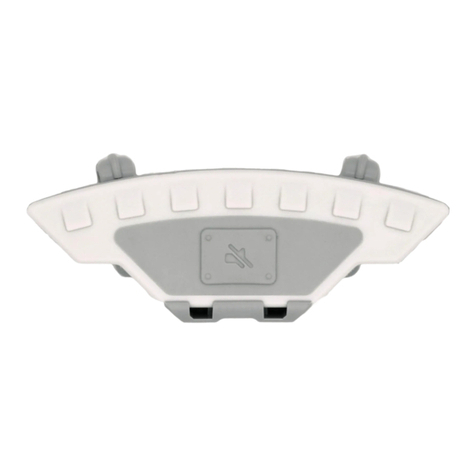
SALES@SAFEGUARDEQUIPMENT.COM (208) 773-9263
A P
A © 2018
WARNINGS
• Do not use C for voltages below 2400 VAC.
• C only detects 60Hz AC Voltage and Currents
• Every energized AC conductor is surrounded by an electric eld.
• Every electric current is surrounded by a magnetic eld.
• As you move closer to any conductor, the electric eld will become stronger.
• Greater voltages produce stronger electric elds.
• Lesser voltages produce weaker electric elds.
• Non-ferrous materials typically DO NOT block magnetic elds (i.e. plastics, dry wood, clothing, etc.).
• Ferrous materials DO block electric elds (i.e. iron, steel, etc.)
• Magnetic elds can be detected through non-shielded materials and some ferrous materials.
• C can’t tell if there is more than one energized threat in your area.
• Magnetic elds have a weaker eld strength and will thus have a shorter warning distance.
• Electric elds have a stronger eld strength and will thus have a greater warning distance.
• Underground PRIMARY cables are both insulated AND shielded. e shield is a conductor, it is
grounded, and will block the electric eld.
• Molded cable terminators such as elbows - like the cables they are installed on - are both insulated and
shielded and will block the electric eld.
• e human body WILL block electric elds, but will NOT fully block magnetic elds.
• Conductors lying on the ground or very close to it will result in unsafe warning distances.
• Electric elds will couple to the ground thus drastically reducing C warning distances.
• Use extreme caution around conductors near the ground as C will have substantially reduced
warning distances.
• Treat all conductors as “live” unless or until there is a visible break from a live source and a ground is
in place.
• Always use proper high voltage procedures for testing and grounding.
• Always use proper high voltage procedures, including personal protective equipment, when working
near or around high voltage equipment or conductors.
• Never rely on C as your sole source of high voltage detection.
• Risk of electrocution is inherent in and around high voltage.
• Do not walk backwards when working around energized equipment.
• Do not use C while holding it in your hand or in any other contact with your body. Doing so
will prevent electric current from being detected. Magnetic elds will still be detected, but the full
capacity of the C will not be utilized.
• C is to be used worn on the hard-hat only.
• Warning distances will be greatly reduced in high humidity and rainy environments.
• Never submerge C in water. If fully submerged, moisture could enter the enclosure and damage
C’ detection sensors leading to reduced warning distances or failure to detect a “live” voltage.
• ere will be a reduced alert distance for multi-phase systems.





























